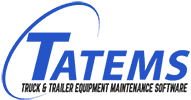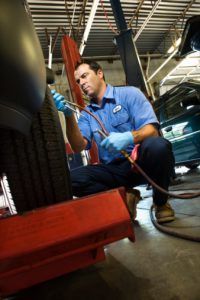In a tough economy, both government and private fleet operations face a lot of pressure to cut their costs. One of the most popular solutions is to outsource any non-core business functions, including fleet maintenance. Many companies find outsourcing to be an attractive option because it brings about direct cost reductions as well as long-term cost savings. However, this decision should not be made lightly. Any time you turn a portion of a company over to a third party, there is risk and reason for concern.As you consider this solution for your particular fleet operation, weigh both the pros and cons of outsourcing fleet management.
Pro: The valuable expertise is an asset to the company.
When companies are under pressure to reduce their budgets, having an outsourcing partner who brings insight, experience, processes, and skills into the business can accelerate growth plans. It is important to keep in mind that this outsourcing relationship should be a partnership. A third party must work with a client to learn why they want to grow and what goals they have for their business in order to create a successful plan of action.
Pro: Outsourcing does not have to be limited to procurement handling
If you don't have a lot of experience with outsourcing or do not have any contacts in the fleet industry that use outsourcing, you may not have a clear understanding of the sorts of tasks that you can delegate to a third party. Many companies have their outsourcing partners handle any number of different jobs including daily rental vehicles, end-of-term vehicle checks, reallocation and storage of vehicles, and fines management.
Pro: Outsourcing leads to measurable, increased efficiencies and improved company focus
When you outsource fleet management and maintenance, you will see increased efficiency for any number of different aspects of the company. Rate of efficiency is dependent upon current maintenance management systems. However, it doesn't take most companies a long time to realize that when they're spending less time on their fleets, they have more energy to focus on core business tasks. Fleet operations see multiple benefits, including heightened fleet availability and reliability, higher cash flow, and increased productivity.
Pro: Outsourcing leads to heightened human resource productivity
- Redirected resources. Companies get the opportunity to use financial and personnel resources for core business tasks as opposed to non-core activities.
- Decreased head count. One of the most effective and quickest techniques for managing human resource requirements is outsourcing maintenance operations. Third parties can provide training, benefits and advancement opportunities for existing employees within a fleet operation.
- More high quality services. When companies do not have the necessary resources in-house, they often turn to outsourcing, which opens up a whole new world of services for drivers.
Con: Employees don't have anyone to talk to within the company
Some companies have found that keeping an in-house fleet manager instead of outsourcing the position actually saves the company money. An in-house manager talks directly to the drivers whenever they have questions or concerns. When a well-qualified individual holds this position for many years, he or she builds solid relationships with the drivers as well as the local dealerships, insurers, and account managers. This level of personal contact is very difficult, if not impossible, to achieve with outsourcing.
Con: Companies can lose valuable insight when they fully outsource vehicle management or absorb it into another position, such as finance or HR
As businesses weigh the pros and cons of outsourcing fleet management, budget is often their first priority. While budget may drive the decision-making process, you cannot discount the notion of insight and expertise. For example, a fleet specialist has cross-business expertise and extensive experience that allows a business to increase its efficiency and to save a significant amount of money every year. Fleet specialists also have a strong understanding of a company as a whole and are frequently some of the first individuals to know about a business's new developments.
Con: Outsourcing can come with a loss of accountability.
The bottom line is that directors are always responsible for their drivers. Even when you use outsourcing for some of your fleet management tasks, you must maintain in-house procedures for monitoring performance, analyzing risk, and working with providers to ensure a safe, compliant operation. You cannot simply hand over all of the responsibility and hope for the best. Most companies find that best practice is to keep an in-house staff member for policy and oversight and to outsource interactive tasks including accident reporting, purchase handling, and taxes.
Implementing and maintaining a fleet management system that is just right for your particular fleet operation is a balancing act. Successful outsourcing is dependent on multiple factors, including organizational culture, in-house expertise, and cost imperatives. HR must maintain some level of responsibility no matter what solution a company chooses.
About the author:
Robert J. Hall is president of Track Your Truck, a leader in GPS vehicle tracking systems and software for small and midsized companies.






